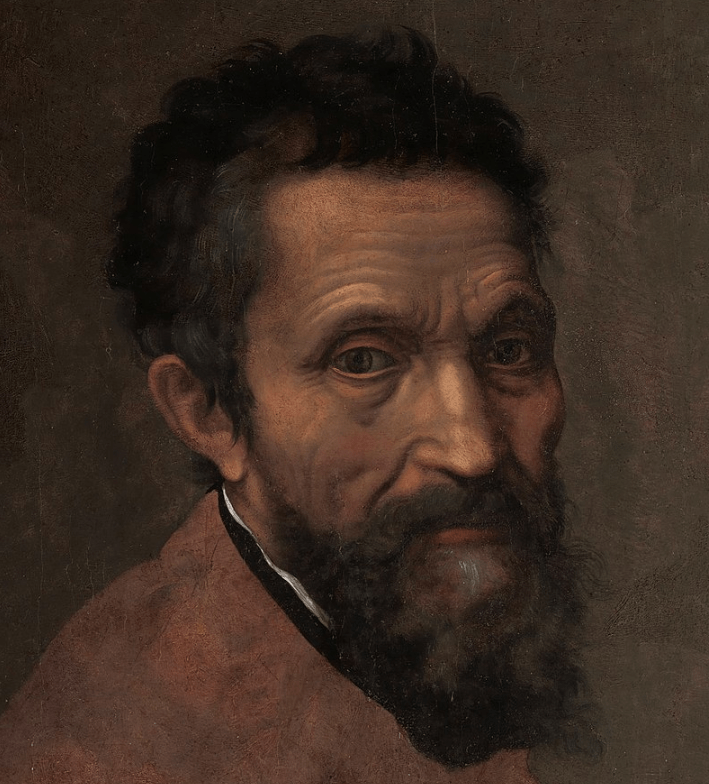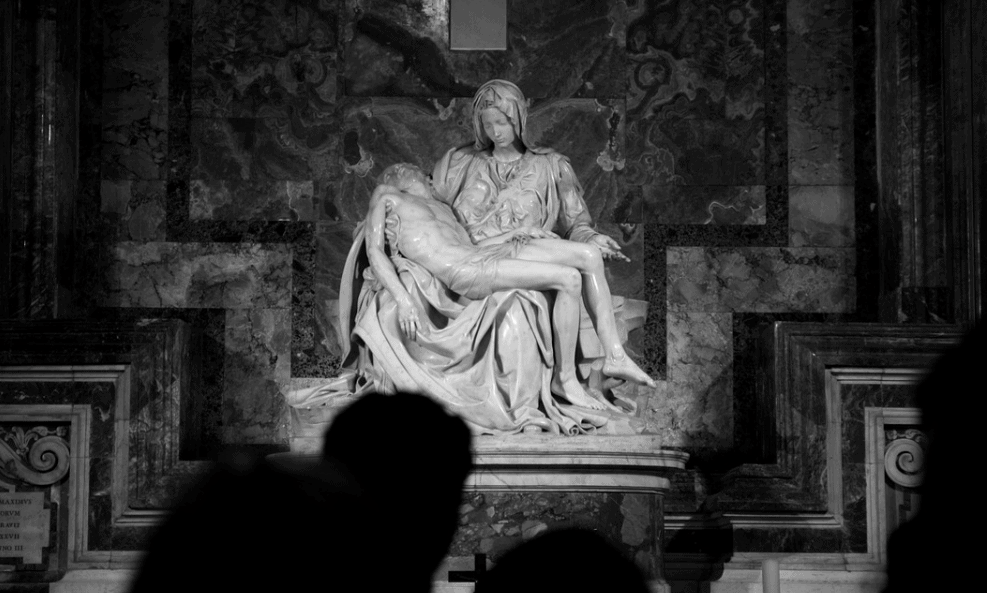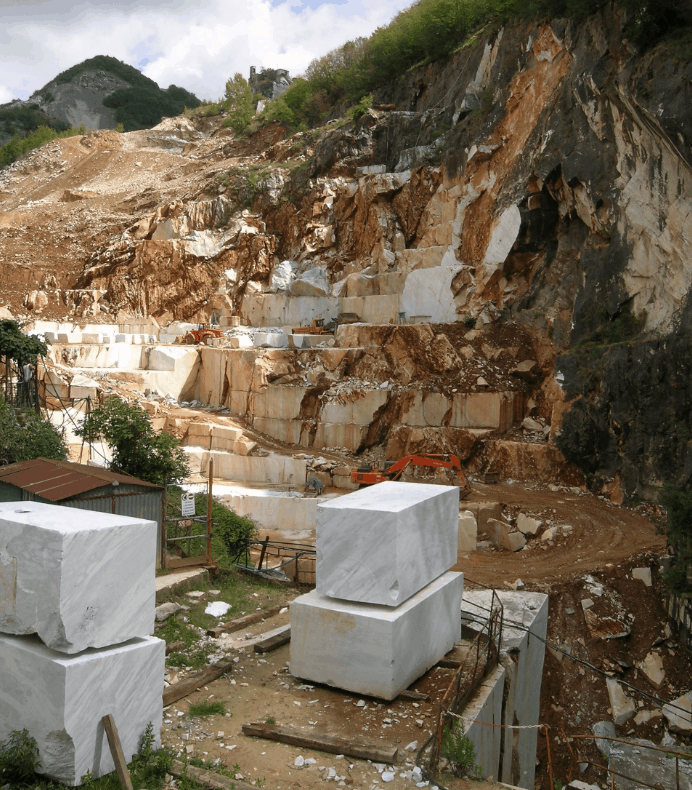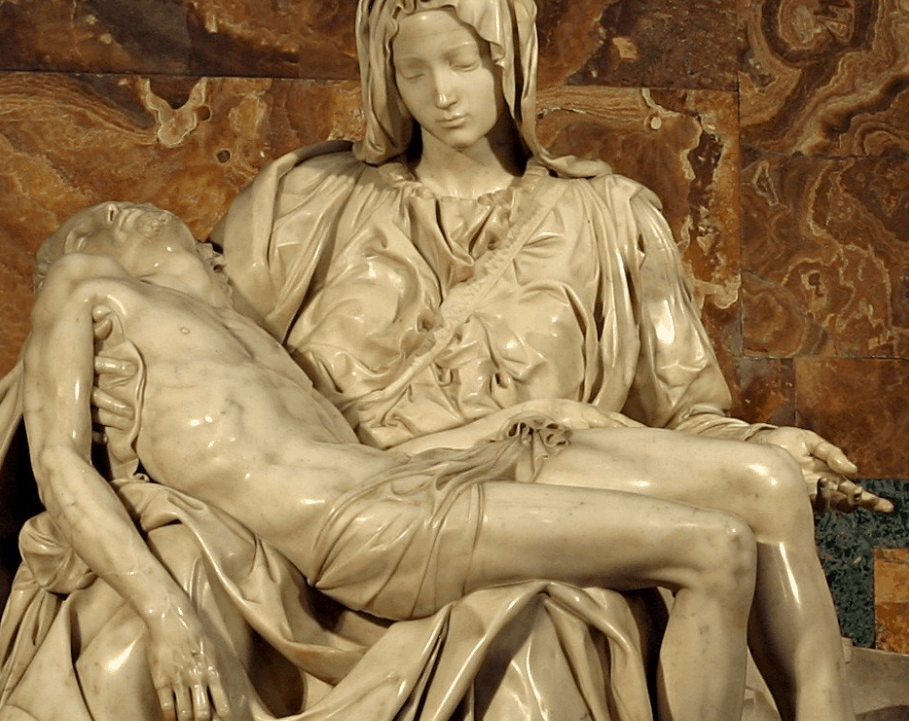Very few artworks have had such a profound impact on the world of art as this monumental Renaissance sculpture by an Italian polymath.
It’s one of the most famous sculptures in the world, and in this post, you’ll discover the ultimate list of facts about the Pietà.
1. What is the Pietà?
The Pietà literally means “The Pity,” and is a statue that depicts the Virgin Mary mourning her son Jesus Christ after his crucifixion. It’s a pyramidal sculpture with Virgin Mary’s head at the top, and widening at her dress.
The sculpture was made out of Carrara Marble and is considered to be one of the most important works of art from the Renaissance period. It was completed in 1499 and it balances the Renaissance ideals of classical beauty with naturalism.

2. It’s created by one of the best artists ever
The Renaissance period was a remarkable time for art as some of the best artists of all time were born then. One of them was Michelangelo di Lodovico Buonarroti Simoni, better known simply as Michelangelo.
His influence on Western Art has virtually been unmatched and has only been rivaled by his contemporaries Leonardo da Vinci and Raphael, who remarkably lived in the same period and worked in the same places.
Mostly known as a sculptor, he was also an amazing painter, with the ceiling of the Sistine Chapel which includes works like the “Creation of Adam” and “The Fall and Expulsion from Paradise” (which is part of the Vatican Museum) as one of his greatest achievement.

3. He was only 24 when he sculpted the Pietà
What makes the accomplishment of Michelangelo even greater is the fact that the Pietà was one of the first commissions he ever received.
He was only 23 when he received the commission and 24 when he completed the sculpture.
4. It was commissioned for a special reason
The Pietà was commissioned by a French Cardinal named Jean de Billheres, who was a representative in Rome, as a sculpture to decorate his tomb in St. Peter’s Basilica.
His request was no ordinary one. He wanted the sculpture to be the “most beautiful sculpture in the world, impossible to better by any living artist.”
Michelangelo was a young and ambitious artist who wasn’t daunted by this request but saw it as an opportunity to not only do that but make it better than any sculpture that was ever created, including those of the Ancient Greeks and Romans.
He did exactly that, he instantly made his name, and it marked the start of his illustrious career.
5. It’s bigger than you think
If you take a good look at the Pietà in some pictures, you might think that the sculpture is just a little statue that fits in the palm of your hand.
It’s not. It’s actually quite big as it measures 174 x 195 centimeters (68.5 x 76.8 in).

6. Michelangelo only needed one block of marble
The fact that somebody could turn an enormous block of marble into a piece of art such as the Pietà baffles just about everybody.
And that’s exactly how Michelangelo created this masterpiece. he got himself a huge block of Carrara marble and started chiseling away.
Cararra marble is quarried in the city with the same name which is located at the northernmost tip of the region of Tuscany in Italy. It’s usually white or blue-grey and used for sculpture and home decoration.

7. There’s something about Mary
The sculpture was unprecedented in Italian sculpture. This doesn’t mean that the theme of the Virgin Mary with Jesus, the “pity” theme, was though.
What’s remarkable is that Michelangelo depicted Mary as a young woman in her early 30s or even 20s. This makes it look uncommon because her son died at the age of 33.
One of the reasons is that Michelangelo wanted to emphasize the fact that Mary was still a virgin, and according to his biographer Ascanio Condivi, he said to him:
Do you not know that chaste women stay fresh much more than those who are not chaste? How much more in the case of the Virgin, who had never experienced the least lascivious desire that might change her body?
Michelangelo commenting on why he depicted Mary as a young woman.

8. The figures are out of proportion
If you look closely at the sculpture, you can see something really odd. The fact that Virgin Mary carries her adult son in her lap, seemingly as if she is carrying a toddler, doesn’t make you really notice something’s off with her shape.
At the bottom of the sculpture, the body of Mary appears to be way too wide for her relatively small head. Michelangelo camouflaged this by letting Mary wear huge drapery.
Because of this little trick, there doesn’t seem to be anything off at first sight, even though it’s clear at second glance that the proportions just don’t make sense.
9. Michelangelo never signed his work, but he made an exception
He usually never signed any of his work, but then something happened that made him change his mind about the Pietà.
Giorgio Vasari, another one of his biographers (he had two while he was still alive), mentioned that he overheard a visitor ask about the sculptor. Another person that was admiring the Pietà told the visitor that it was the work of Cristoforo Solari, one of Michelangelo’s rival sculptors at the time.
Upon hearing this blasphemy, he walked over to the sculpture and carved the letters “MICHAELA[N]GELUS BONAROTUS FLORENTIN[US] FACIEBA[T] (Michelangelo Buonarroti, Florentine, made this)” on Mary’s chest.
He regretted this act so much that he never signed another one of his works ever again.
10. Its first home wasn’t St. Peter’s Basilica
The Cardinal who commissioned the sculpture chose to have his tomb placed in the Chapel of Santa Petronilla, a Roman mausoleum on the south side of St. Peter’s Basilica.
This chapel was, however, destroyed when Bramante started working on the expansion of the basilica, which eventually made it the biggest church in the world.
The Pietà was first housed in this chapel until it was moved to St. Peter’s Basilica.

11. It lost 4 fingers after being moved
While the sculpture was being moved to the St. Peter’s Basilica, an accident happened and Virgin Mary lost 4 fingers on her left hand.
It wasn’t until 1736 that these were restored by Italian sculptor Giuseppe Lirioni.
12. Where the fingers restored as the original?
Some historians and scholars believe that Lirioni took some liberties when restoring the fingers on Mary’s left hand.
Could it be that he made the gesture of the fingers more rhetorical?
13. It briefly moved to New York City in the 1960s
In the years 1964 and 1965, New York City hosted the World Fair. It contained over 140 pavilions and included a pavilion dedicated to Vatican City.
At the request of the Archbishop of New York Francis Spellman, Pope John XXIII permitted the Pietà to be transported to New York and put on display in the Vatican City pavilion for this event.
It’s claimed that people waited for hours on end to catch a glimpse of the Pietà from a conveyor belt that passed it.
14. The safety of the Pietà was definitely ensured
Apart from putting visitors on a conveyor belt, there were some more safety measures taken to ensure the Pietà couldn’t be damaged while on display in New York.
The main measure was to put 7 layers of plexiglass in front of it which weighed over 4,900 pounds (2,222 kilos) altogether!
15. They should have taken these measures in the Vatican as well
The Pietà managed to safely travel back home to its spot in the St. Peter’s Basilica after being on display in New York.
On May 21, 1972, Tragedy struck though. A mentally disturbed individual named Laszlo Toth walked into the Basilica and started shouting “I am Jesus, I have risen from the dead,” ran to the Pietà and started lashing out with a rock hammer.
The Hungarian-born Australian managed to hit the statue 12 times and broke one of Mary’s arms, knocked off a piece of her nose, and chipped one of her eyelids.
An American nearby grabbed him by the beard and was able to control the madman before the police made the arrest.

16. Onlookers grabbed some souvenirs
As the madman was lashing out, pieces of marble were flying in the air. Many onlookers started shouting and more importantly, started grabbing the pieces of marble as if it was a souvenir as well.
Many of the pieces were returned, but just as many were never found again.
17. The restoration process took a long time
Because many pieces of the marble were never returned, it made the restoration process painstakingly slow.
It took over 10 months for the Pietà to be completely restored and put back in its usual location, which is just to the right of the entrance, between the Holy door and the altar of Saint Sebastian.
Plus, it’s behind a plexiglass wall now as well!
18. Michelangelo’s final sculpture was a Pietà as well
The Pietà was one of many sculptures with the same theme that Michelangelo created in his lifetime. And he lived a very long life, only passing away 3 weeks shy of his 89th birthday.
One of the most remarkable facts about the Pietà is that the final sculpture he worked on, which was just 6 days before his death, was a sculpture with the same theme as well!




Leave a comment
You must be logged in to post a comment.